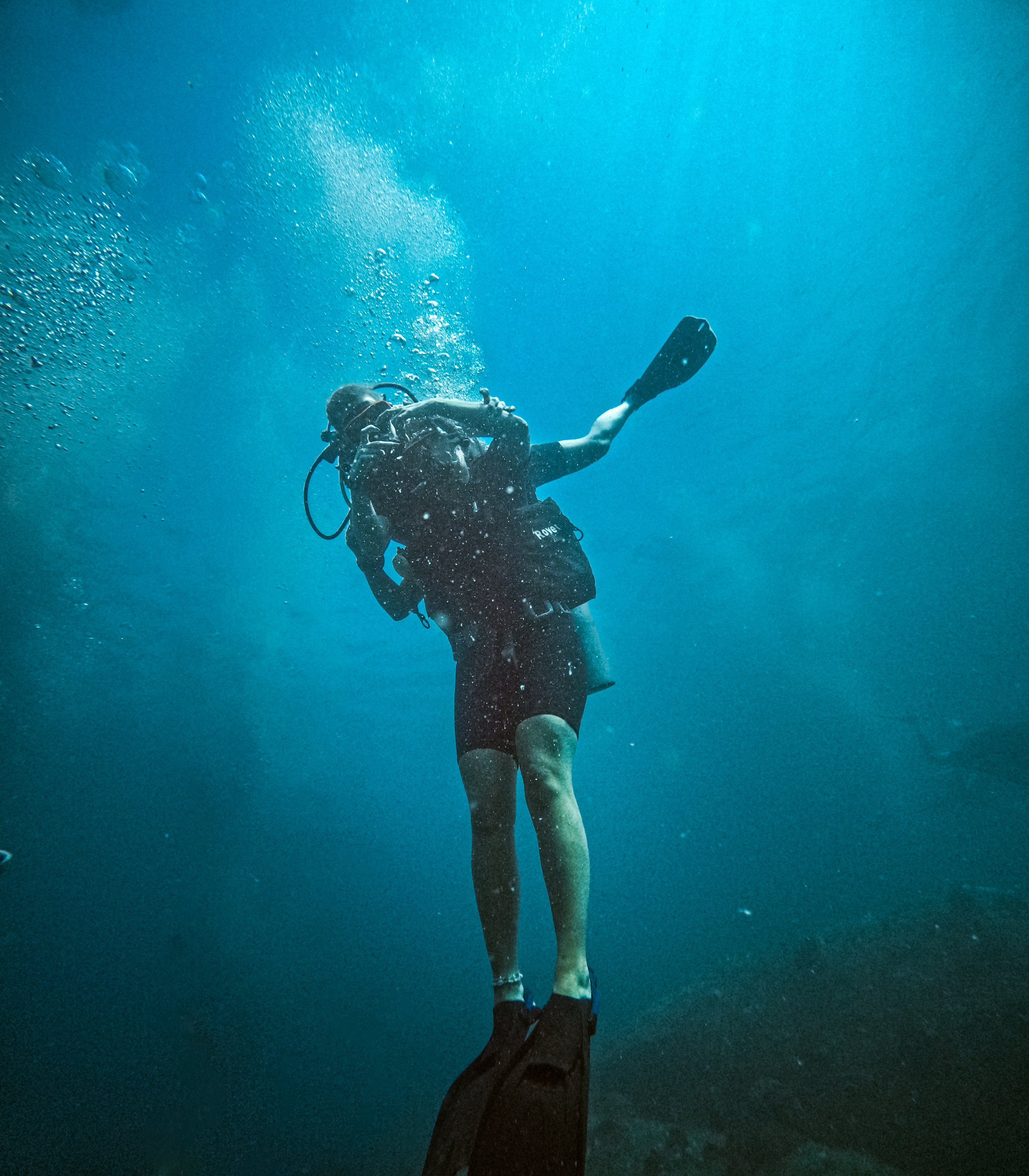Diving in Koh Tao: Everything You Need to Know
Most people come to Koh Tao because it's the cheapest place on earth to get your diving certification! Everywhere you look, there are divers, dive shops, dive stores, and boats transporting divers. It takes up a huge part of the island.
You can get your Open Water certification here, which is the first step if you want to dive more. You’ll learn the basics of diving and get the tools to dive safely and responsibly.
How to Choose a Good Dive School?
Whether you speak English, Dutch, Spanish, German, or French, there’s a dive school for you on Koh Tao! I did my course at a Dutch dive school, but don’t worry—diving hand signals are universal, and everything is explained in English. You’ll be able to dive anywhere in the world!
My advice? Choose a dive school that feels right for you. Most dive schools here are high-quality, but the key is that you feel safe and comfortable. Whether you go for a school in your native language or an English-speaking one, your comfort is what matters most!
PADI or IDD?
“Huh, there’s a difference?” Yes! You’ll hear a lot of people in Southeast Asia talking about getting their PADI certification. PADI is more widely known, but that doesn’t necessarily mean it’s better.
I personally got my Open Water certification with IDD. Why? It was cheaper, and I could dive deeper. PADI allows you to go down to 18 meters, while IDD lets you go to 20 meters—useful for shipwrecks or coral reefs just beyond that limit!
I Find Diving Scary, But I Really Want to Get Certified!
That’s totally normal! You’re learning a completely new skill, and yes, things can go wrong. But as long as you pay attention to your instructor, follow the rules, and take things step by step, you’ll be just fine.
You’re not alone in feeling nervous. Breathing underwater with a tank on your back is weird at first! Give yourself time to adjust, and don’t rush the process.
What Does a Dive Course Look Like?
Day 1:
Your first day is mostly theory: underwater signals, safety instructions, and an overview of what to expect. After a few hours of learning, you’ll head to the boat and into the water.
Some schools start in a pool, but many on Koh Tao begin straight in the sea (don’t worry—it’s shallow, about 2 meters deep). You’ll practice swimming with fins, breathing underwater, and some basic exercises like clearing your mask and retrieving your regulator. After your first dive, you’ll do it again, repeating skills and ending with a short dive with your instructor.
Day 2:
Morning or afternoon session, plus some self-study. You’ll do two more dives, working on exercises like sharing air with a buddy, finding your regulator, and improving buoyancy.
Day 3:
The big day! You’ll dive to your maximum depth (18m or 20m). It sounds deep, but don’t worry—it still feels bright and clear. After finishing your dives and self-study, you’re officially a certified diver!
Must-Haves for Diving
Water: Dehydration happens fast. Think you have enough water? Bring more!
Mineral water: Helps retain hydration better than regular water.
Salty snacks: Keeps electrolytes balanced—pack some chips!
Dry bag: Keeps your valuables dry on the boat. A must-have for diving and jungle adventures.
Flip-flops: You’ll have to take your shoes off on the boat, so avoid heavy sneakers.







